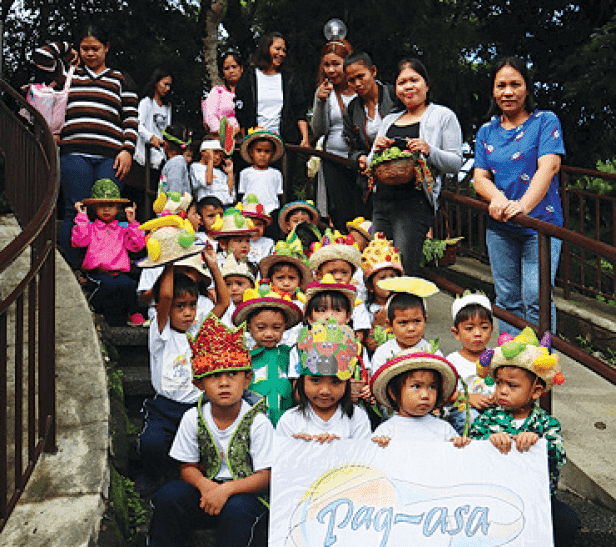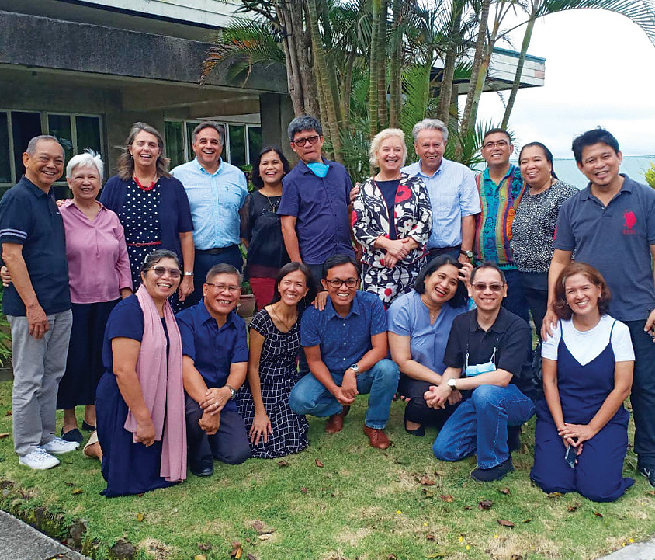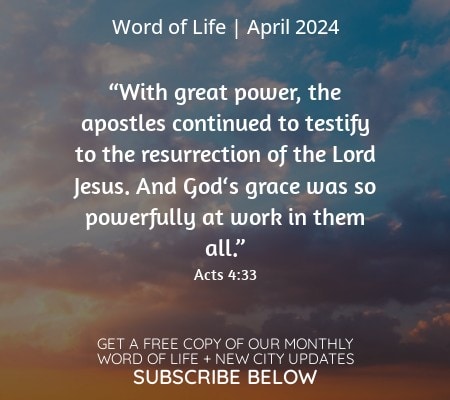Andrew: The spirituality of unity is very much attuned to the synodal process which we try to live all over the world from the start of the Focolare Movement. Under the guidance of the Holy Spirit, Chiara Lubich promoted a spirituality of communion, living with the presence of Jesus among us, in the dynamics of relationships of love and communion marked by the Trinitarian model.
Along with the Church, we members and adherents of the Focolare are all called to a continuous “journeying together”! This process has broadened the horizon of that Holy Journey we started in the 1980s. It was from Chiara’s intuition to help us “become saints together” and witness love to the world that the worldwide conference call or “link-up” began, which has been connecting the Focolare communities of the five continents for decades. The sharing of experiences of the Gospel lived-out, and of challenges and projects are important steps to strengthen the family spirit and multiply cells of authentic fraternity among individuals and peoples.

This sincere communion commits us to live for one another, to give of ourselves to those in need, and not stop in front of difficulties on the path of collective holiness. Our entire spirituality helps us, because it leads us to discover how precious relationships are. It forms us in the dynamics of love for our brothers and sisters, which is always new, and helps us live in accordance with the Gospel. This led us to commit ourselves to living “the sanctity of the other is my responsibility with the goal of walking together towards ‘a holiness of the people’ (a people born of the Gospel).”
Nar: The spirituality of communion has two pillars: unity and Jesus Crucified and Forsaken.
Unity. We commit ourselves to live the Testament of Jesus: “that they may be one as we are one… that they may all be one.” Chiara perceived the profound reality of the relationship between the Father and the Son, and the greatness of that relationship being communicated to us. And for us, this desire of Jesus is translated into a firm commitment to live His new commandment, to love one another as He has loved us (cf. Jn 15:12).
Chiara’s charism of unity has reached a 360° dialogue which includes communion not only with various Christian Churches and different religions, but also with persons who do not have religious convictions, thus fostering fraternity among people from different walks of life. This dialogue based on life can contribute to building up a new global culture that respects the diverse cultures of the world and has as its paradigm the prayer of Jesus for universal fraternity. We strongly believe that everybody is a candidate to unity.
Jesus Crucified and Forsaken: He is the apex of Love that redeems and reunites to God a torn and divided humanity. He is the key to unity with God and unity among peoples.
“Jesus Forsaken” and “unity” are two sides of the same coin. In order to realize unity, the secret is Jesus Crucified and Forsaken! By living this way, we embark on an Easter journey, from forsakenness to the light of unity, which is essential in any synodal journey.
Andrew: Chiara in Asia. In 1981-1982, Chiara made her first trip to Asia. Here she came in direct contact with the great Oriental religions and discovered the gift of a profound spirituality in Hinduism, Islam, Buddhism and other religious traditions like Confucianism and Taoism. In her desire to share with them the light of Christianity, dialogue was necessary.
Coming to the Philippines in January 1982, she was overwhelmed by the presence of so many Catholic churches and shrines crowded with people. Speaking to some 3,000 members of the Focolare, she shared how it was like having discovered a gold mine, some sort of spiritual oil well that could be the source of an enormous light for the evangelization of Asia. Chiara felt that the Philippines has the mission of sharing the light of the Christian faith with her Asian and Pacific neighbors.
During her visit, Chiara also founded the ‘little town’ called Mariapolis Peace, one of the 25 Focolare ‘little towns’ which are spread all over the world. It is called “a city of peace because it coincides with unity and dialogue with other religions… a city that bears witness.” Here, people from different backgrounds try to live together Jesus’ New Commandment: “Love one another as I have loved you.” Chiara wanted to show the world how humanity would be if everyone lives the Gospel.
Among the different realities that compose Mariapolis Peace, there are two institutions founded for this mission: the Center of Spirituality for Priests, Deacons and Seminarians in Asia and the School of Dialogue with Oriental Religions.
Scuola Epi (School of the Epiphany) was set up in response to the request of some Asian Bishops. Since 1983, more than 2,000 diocesan priests, deacons and seminarians from various Asian countries have attended this School and have gone deeper in their knowledge and experience of the spirituality of unity.
The School of Dialogue with Oriental Religions (SOR) prepares the members of the Focolare to dialogue with people who belong to religions or religious traditions different from Christianity. Over the years, SOR has conducted courses on Buddhism, Taoism, Islam, Shamanism, Confucianism and Hinduism, as well as lessons on the Catholic Church’s documents on interreligious dialogue.
Nar: How does the synodal process take place today within the Movement?
We wish to point out some important reference points on how we try to live synodality which for us is a day-to-day journeying between two fires: Jesus within and Jesus among us. This life is very challenging and requires us always to start over again.
1. The pact of mutual love, constantly renewed, is the root of our communitarian spirituality. It is our commitment to be ready to love each other as Jesus loved us; it leads to kindness, mercy, concrete service, recognizing and valuing the positive of the other, a culture of trust, and a family spirit.
2. The pact of mercy also helps us see our neighbor in a new way when we meet him or her each morning (in the Focolare, at school, at work…), truly forgetting their imperfections, their defects, covering everything with love.
3. Speaking with respect, sincerity, clarity and with utmost charity because everything can be shared with parrhesia [frankness] putting oneself before God and keeping alive the reality of Jesus’ New Commandment.
4. Putting ourselves in an attitude of listening is a concrete way of loving as we have been created as a gift for one another. We need to learn the “Art of Loving” which consists in loving everyone; being the first to love; loving others as ourselves, and making ourselves one with others. This helps us build relationships that enable community discernment in the light of Jesus in our midst.
5. Journeying together in the life of Focolare is sustained, to a great extent, by the practice of the Instruments of the Collective Spirituality. These include communion of souls and sharing of experiences on God’s Word. Besides, for us to increase the love among us, the moment of truth or fraternal correction helps us a lot. This usually takes place in moments of retreat where a strong unity is guaranteed to express the positive aspects, as well as the aspects that need to be improved.
Andrew: After almost 56 years of journeying together in the light of the charism of unity in Asia – always in unity with the Holy Father – this communitarian way of life has given birth to various expressions in addition to the Center of Spirituality for Priests, Deacons and Seminarians and the School of Dialogue with Oriental Religions in Tagaytay:

· Rooted in the Gospel, the New Families Movement aims at answering the many challenges families are facing today.
· The Youth for a United World (Y4UW) is a group of young people of different races, cultures and beliefs committed to living for a united world. In 2018, the Y4UW organized the Genfest, an international gathering of over 5,000 young people from all over the world, which was held in the World Trade Center in Pasay City, Metro Manila, the first time outside Europe.
· The Parish Movement is involved in permeating parishes and dioceses with the spirit of unity. Its members are committed to making the parish a home and school of communion.
· The New Humanity Movement is a social expression of the Focolare Movement that aims to help people live out the Gospel revolution within the structures of civil institutions in the fields of economics, culture, ecology, social ethics, art, education, social communications, politics, and so on.
· Appalled by the immense gap between the rich and the poor, Chiara, in her visit to São Paulo, Brazil in 1991, launched the “Economy of Communion (EoC)” which aims to form new entrepreneurs and renew present ones who willingly share their profit to sustain its goals: to reduce exclusion and the poverty resulting from it; spread the culture of giving and of communion; and develop businesses and create new jobs.”
· New City Press is one of the instruments of witness and diffusion of the Focolare Movement. New City Press Philippines wishes to be a pathway to universal fraternity, a means of dialogue at all levels, and an instrument of communion.
· Sophia University is the last opera (work) of Chiara in the Movement. It was established by the Holy See by decree of the Congregation for Catholic Education on December 7, 2007. The institute was born from an intuition of Chiara who, ever since she was young, longed to delve into studies in search of the truth.
Nar: We conclude with the dream of Chiara expressed in 2000 and the declaration of the General Assembly of the Movement in 2021:
“I dream of a Church which can be seen by the world as being more beautiful… I dream of seeing in her a holiness of the people… I dream that wars, conflicts, hunger and a thousand other evils in the world will diminish… I dream of a more living and active dialogue among peoples of the most varied religions linked to one another by love… I dream of Gospel-based relationships… not only among individuals, but also among groups… among peoples and among States, so that it becomes logical to love other people’s countries as our own….”1
“We commit ourselves to seek out those who suffer, those who are excluded, starting with the people we ourselves have hurt or excluded, to be in dialogue with everyone… to approach each person, to listen to them profoundly… to promote a culture of prevention [of all forms of abuse] and the promotion of every person’s well-being, with appropriate training and transparent communication… to scrutinize the “signs” of God’s presence in the events we are experiencing as humanity.”2
Andrew Camilleri and Nar Plaras
1 C. Lubich, “Ho un sogno,” in Città Nuova, 1 (2000) pp. 8-9.
2 General Assembly of the Work of Mary, Final Document: Courage to Embrace the World, February 7, 2021




